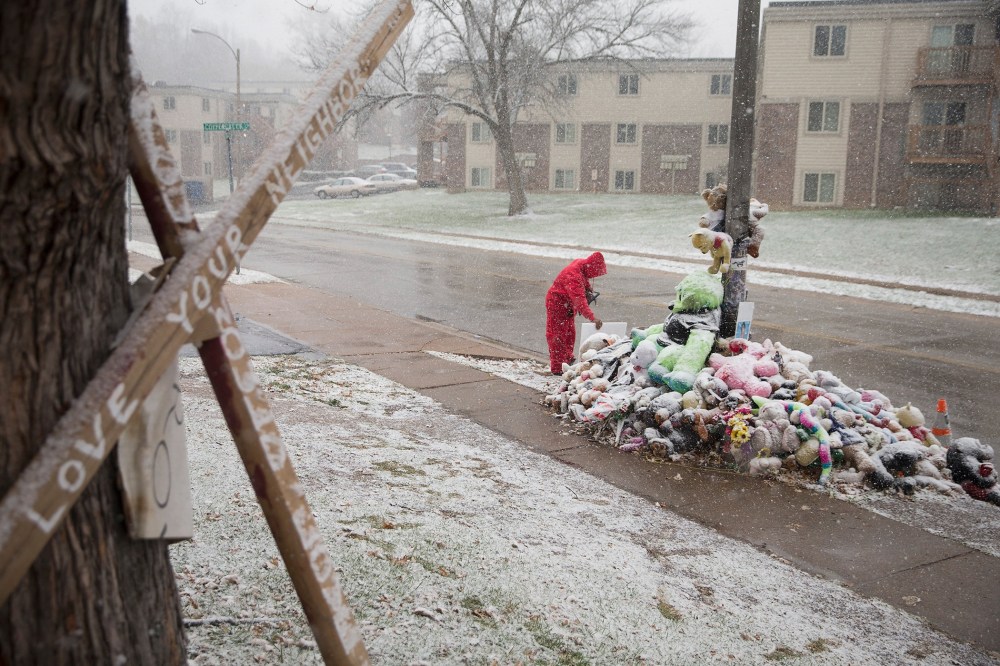FERGUSON, Mo. — As the first snow of the season falls here, the entire metropolitan region remains frozen with anticipation as another weekend passes without an announcement on whether or not a St. Louis grand jury will indict police officer Darren Wilson in the shooting death of unarmed teen Michael Brown.
The decision, which is expected within days, rests with a panel of 12 citizens. They saw testimony Thursday from a person believed to be one of the last — if not the final — witnesses to appear before the grand jury in Brown’s case. Once the grand jury decides on whether or not to charge Wilson, the question is not whether the announcement will trigger rounds of protests, but rather, how the expected demonstrations will play out.
RELATED: To indict or not to indict? The question that has Ferguson on edge
Missouri Gov. Jay Nixon signed an executive order on Monday activating the state’s National Guard to provide support for the “unified command,” which consists of the Missouri State Highway Patrol, St. Louis County Police Department and St. Louis Metropolitan Police Department. The statement released by the governor’s office referenced an expected grand jury announcement as coming “later this month.”
The federal Justice Department investigation into the shooting death is ongoing, and, on Monday, Attorney General Eric Holder noted that the widespread implications of the incident and the protests that followed.
“The struggle goes on, and it’s not only Ferguson,” Holder said from an event in D.C. honoring Emmitt Till, a 14-year-old who was murdered in Mississippi in 1955 after he allegedly flirted with a white woman. “There are other communities around our country where we are dealing with relationships that are not what they should be, be they official, communities that they are supposed to serve, or whether it is on a more personal level.”
Protest groups in Ferguson on Sunday offered a preview of what could be to come: They carried out an act of civil disobedience that temporarily disrupted traffic and blocked the intersections at the steps of the Washington University in St. Louis campus.

Huddled against gusts wind and snow, the groups marched through the street until designated participants acted out a scene of police officers shooting unarmed citizens. Protesters played dead, laying atop a fresh sheet of snow on the ground, as others took chalk and drew their outline on the street.
“It’s grief — so many people have lost loved ones — and it is sorrow and it is anger and righteous indignation,” Elizabeth Vega said after the event, padding through the snow with posters tucked under her arm. “As a country, it’s a moral failure on our part.”
The demonstrations mark the 100-day milestone since Brown’s Aug. 9 death, which sparked national outcries and raised turmoil over the summer in this mostly African-American suburb of St. Louis.
Police and witnesses have said Wilson and Brown were caught in a struggle through the window of the officer’s SUV when, according to police, Wilson says Brown attempted to reach for the officer’s gun. Forensic evidence, leaked to The New York Times through unnamed sources, suggested the first shots were fired from inside Wilson’s vehicle. A half-dozen eyewitnesses have said publicly that they saw Brown flee from the SUV to later turn and put his hands up in surrender as Wilson fired the final fatal shots. But a government official who spoke on condition of anonymity told NBC News’ Pete Williams that Wilson said the teen turned and charged back toward him after running from the vehicle, at which point Wilson feared for his life.
PHOTO ESSAY: How the crisis in Ferguson unfolded, in photographs
The seasons have changed since those sweltering, volatile summer weeks that followed Brown’s death, and a chill has set into St. Louis, but elected officials, law enforcement agencies, community leaders and residents are once again on edge as they brace for a decision from the grand jury.
Groups have already designated two separate locations for demonstrations to be held immediately after a decision is announced: One site is at the steps of the Ferguson Police Department, while another is in the Shaw neighborhood located in the city of St. Louis, where another black teen was shot and killed by a police officer in October.










